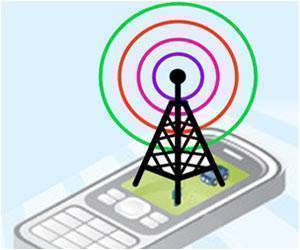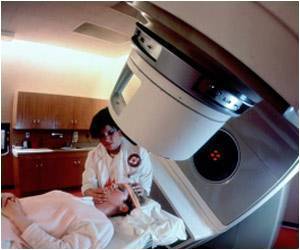When the cancer cells were irradiated (exposed to radiation), their less stiff extra cellular molecules reduced the growth of cancer, finds a new study. This case is an classic example of how fractionated radiation therapy can be used to treat cancer.

‘Stiff cancer cell environments that promote growth of cancer, and its spread can be influenced by radiation. This radiation treatment can make these cell environments less stiff and thereby prevent migration of cancer from one body part to another.’





As cancer cells grow and become increasingly dysfunctional, the network of biomolecules surrounding them are deposited more and begin cross-linking more, leading to a thicker, stiffer matrix. This tougher ECM is vital for the cancer cells to migrate throughout the body, signal to one another, and form tumor.One team of researchers from Vanderbilt University aims to unlock how irradiation might alter the mechanical properties of the micro environment.
The team demonstrated that ionizing radiation can reduce the stiffness of both the ECM of an extracted tumor and an isolated matrix of collagen fibers. Appearing this week in APL Bioengineering's special issue on the "Bioengineering of Cancer," from AIP Publishing, their results pave the way for irradiation to be used to create matrices with tailored properties, and suggest that radiation therapy might have effects beyond disrupting cellular DNA.
"We wanted to know how radiation effects the tissues surrounding cells, particularly how this changes the stiffness of the matrix," said Cynthia Reinhart-King, an author on the paper. "The change in tissue stiffness during tumor growth can be palpable. Stiffness, for example, is what you would look for in breast self-exams."
As cancer cells grow and become increasingly dysfunctional, the network of biomolecules surrounding them are deposited more and begin cross-linking more, leading to a thicker, stiffer matrix. This tougher ECM is vital for the cancer cells to migrate throughout the body, signal to one another, and form tumors. Targeting the ECM's stiffness has become a promising tool in attacking cancer cells.
Advertisement
To date, much of the research on irradiation's effects on the cellular microenvironment has dealt with samples that included cells, obfuscating the irradiation's effect on just the ECM rather than the cell's internal machinery.
Advertisement
Reinhart-King's team discovered that tumor cells were less likely to spread when their stiff ECMs were replaced with ECMs softened by irradiation. Cells suspended in a stiff matrix were more likely to work their way through the matrix to other side of a serum gradient, analogous to how metastasizing cancer cells break free from their tumors. Softened matrices were more likely to hold cells in place.
Reinhart-King said their findings might enable future fractionated radiation -- longer term bouts of therapy using a lower intensity of radiation than most of today's therapies. One particular area of interest is determining if softening can reduce nearby blood vessel leaking and improve drug delivery.
"Since there are risks associated with radiation, we're interested in investigating how fractionated the dose should be," Reinhart-King said. "The key will be to find the right balance."
Source-Eurekalert













